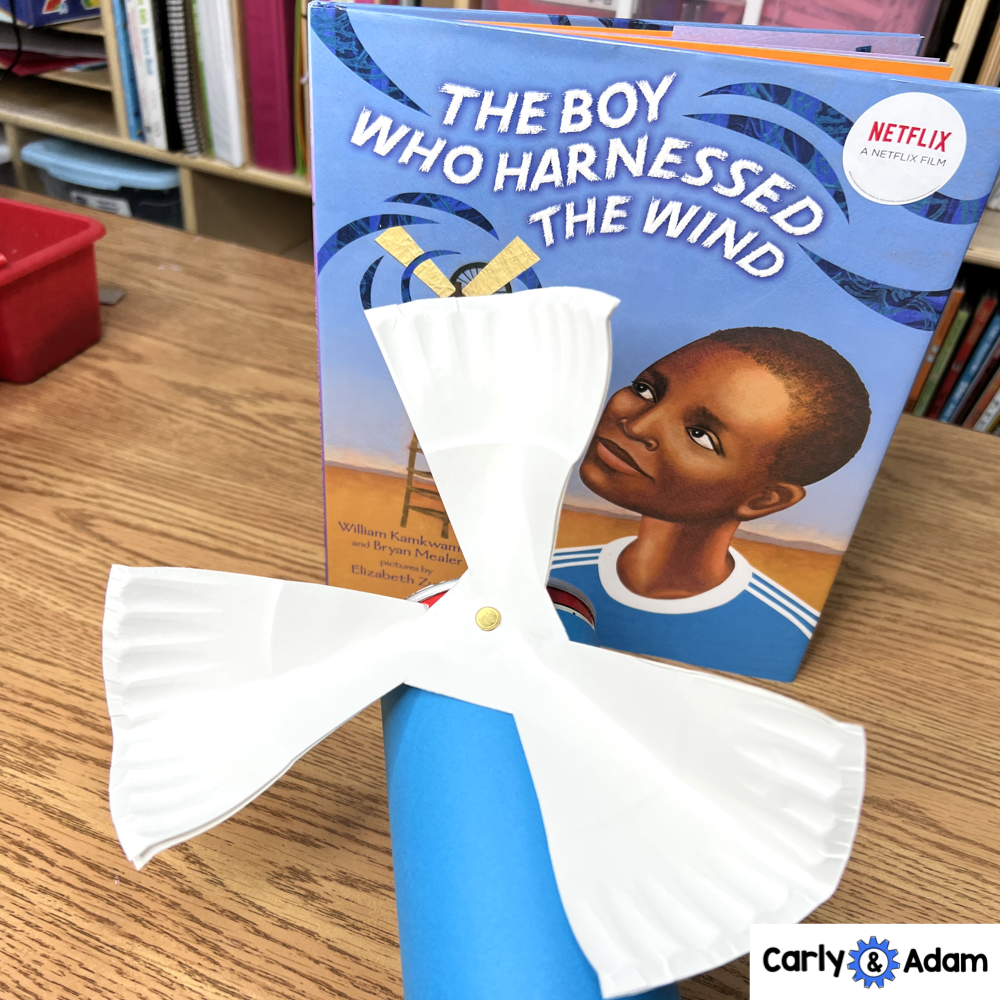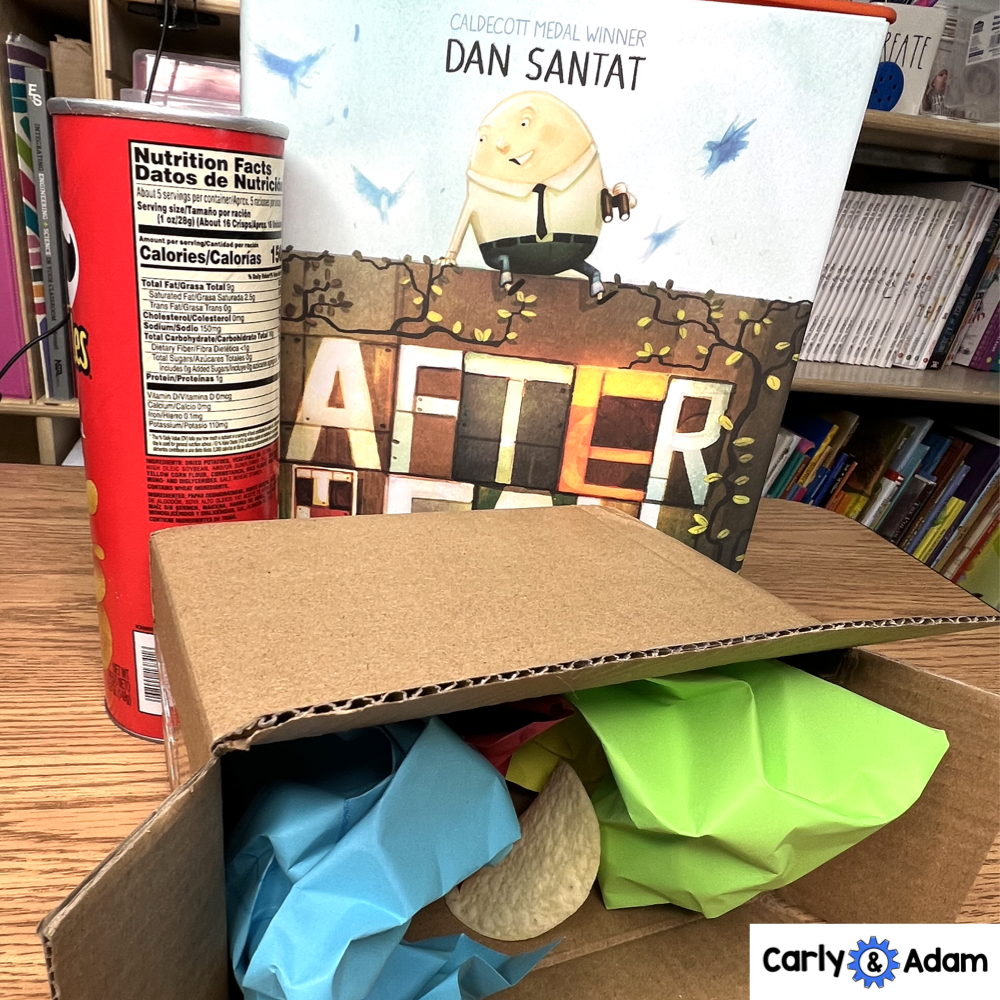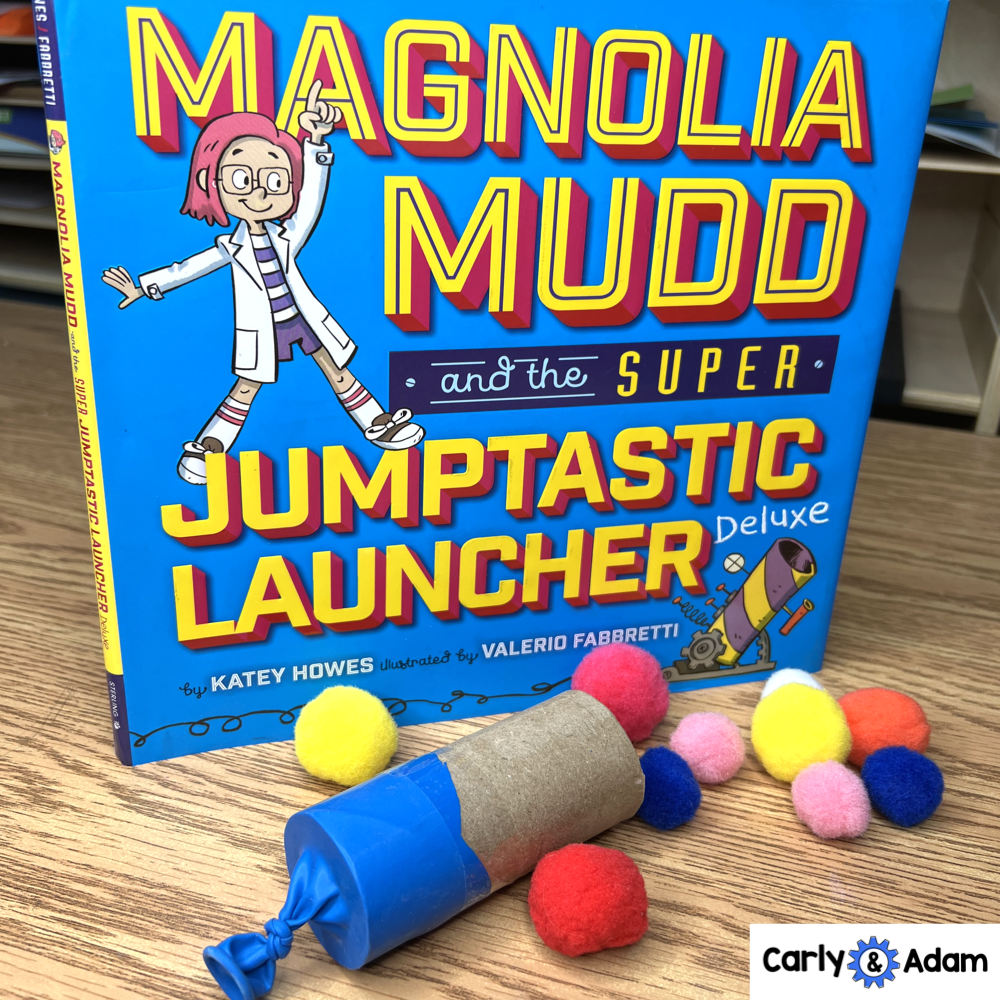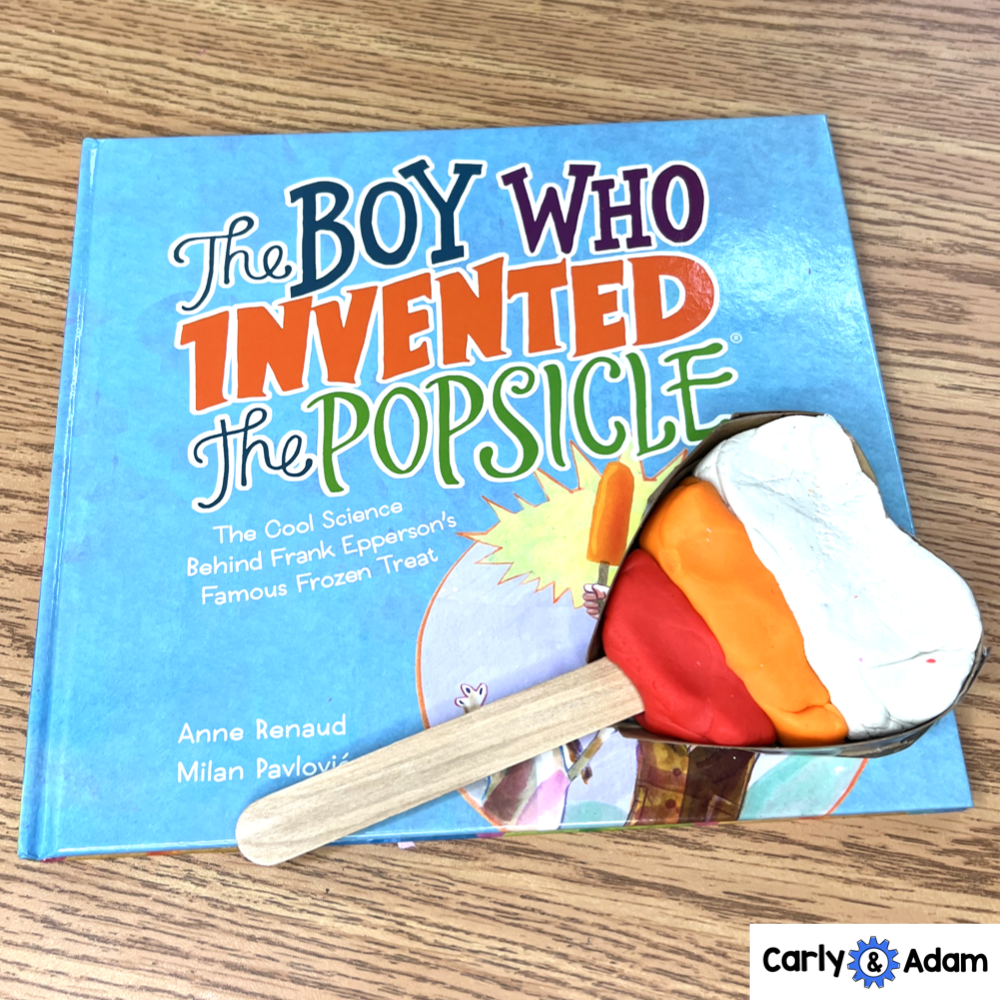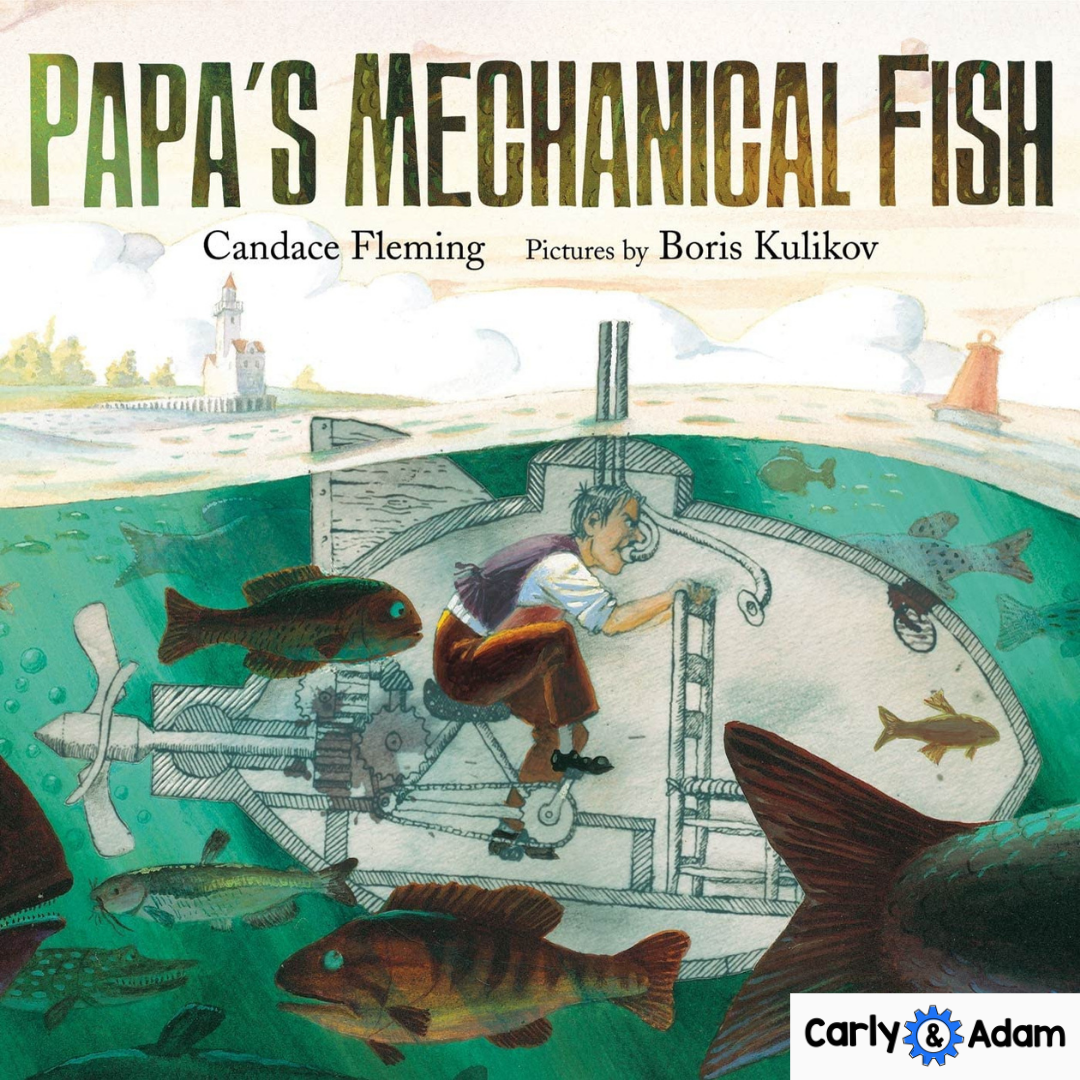Best Books to Teach Engineering in Upper Elementary
The following is a guest post from Dr. Jacie Maslyk.
If you teach in the upper elementary grades 3-5, you know that a great piece of children’s literature can help to set the stage for any STEM lesson or an engaging engineering design challenge. You may have your own “go-to” read alouds, but here are some of our favorites.
All of these books have connections to science, technology, engineering, and/or math. They can be used to introduce an engineering concept or as a way to support existing curriculum content. Most importantly, these books are interesting for kids and make STEM learning fun!
Rosie Revere Engineer
by Andrea Beaty
This popular children’s book by Andrea Beaty is a favorite for a lot of STEM educators. It will provide design inspiration for students. Kids will enjoy the rhyming patterns in the story, as well as Rosie’s wild invention. Not all of Rosie’s designs are well-received, but she perseveres through failed attempts to create a flying machine.
STEM Starters:
Design a flying machine for Aunt Rose using recyclable materials.
Revise Rosie’s snake hat for her uncle. What improvements/changes might you make?
The Boy Who Harnessed the Wind
by William Kamkwamba and Bryan Mealer
With a lack of available resources in his community, William uses what he has available to create a power source for the people where he lives. Harnessing wind power and turning it into a resource for his community, this is an important story to share with students. Not only do students see diverse characters, but also problems that can be solved in places all over the globe.
STEM Starters:
Construct a model wind turbine and include moving parts.
Using found or recyclable materials, design something that will help to improve your town.
After the Fall
by Dan Santat
After Humpty’s fall from the wall, he was put back together again, although he would never truly be the same. Now he was afraid of heights and couldn’t do the things he used to enjoy. One day he finally finds the courage to climb back up and learn to try again.
STEM Starters:
Design something to protect Humpty if he falls again.
Create something to console Humpty so that he feels confident to climb the wall again.
Magnolia Mudd and the Super Jumptastic Launcher
by Katey Howes
Magnolia loves to invent with her Uncle Jamie. She’s disappointed when her uncle finds a girlfriend and decides to get married. Maggie doesn’t want to be a flower girl, so she comes up with some other creative possibilities. Her flower girl invention with an added confetti launcher was a huge success!
STEM Starters:
Design and construct your own confetti launcher.
Build a troll trap (one of Magnolia's other ideas).
The Boy Who Invented the Popsicle
by Anne Renaud
Curious Frank William Epperson liked to experiment as a young boy. He designed all sorts of things, but he especially liked exploring liquids. When he freezes a flavored soda water drink, he discovers a new tasty treat that he calls the popsicle. Inspired by real events, students will enjoy the imaginative nature of the character and will be encouraged to come up with new inventions of their own.
STEM Starters:
Plan a recipe for a popsicle flavor that you think would be delicious.
Explore liquids by heating and cooling a variety of items.
Just Like Rube Goldberg
by Sarah Aronson
The idea of making a complex process to complete a single, simple event--that’s what is behind the Rube Goldberg device. The story of the cartoonist who drew incredibly complicated set-ups to do one small task interests students and gets them thinking about how they might construct a model of their own. With lots of amazing videos out there showing these devices, kids will be inspired to construct one like Rube.
STEM Starters:
Sketch a map of your own Rube Goldberg device.
Work with a team to build one part of a Rube Goldberg device, then connect yours with the build from another team to create one giant-sized contraption.
Papa’s Mechanical Fish
by Candace Fleming
Papa is a determined inventor who demonstrates great perseverance throughout the story, as he iterates on his design of a mechanical fish. He must solve problems and find new and creative solutions with each version of his design. The story shows students the importance of testing and prototyping designs, as well as getting feedback from others.
STEM Starters:
Create blueprints for 2 different underwater vehicles.
Design and construct a submersible like the one that Papa made.
The Dumpster Diver
by Janet S. Wong
In an apartment building in the city, one neighbor loves to look for treasures in other people’s trash. He calls on the help of some kids in the building as they look for the possibilities in all the found junk. They take things apart and combine things together, coming up with amazing and useful designs for themselves and for their neighbors.
STEM Starters:
Create a new invention by combining simple classroom materials (paper clips, tape, scissors, markers, eraser)
Plan an invention that combines two items that you might find in your house. (chair, lamp, table, blender, TV, broom, etc.)
Twenty-One Elephants
by April Prince
When a town is nervous about the design and construction of a new bridge, a small girl proposes a huge solution. As a way to convince the town that the bridge would be strong and safe, the girl asks P.T. Barnum to march the elephants from his circus show across the bridge. The story of the building of the Brooklyn Bridge in New York provides a great opportunity for students to learn about all types of bridges and even build one of their own!
STEM Starters:
Use recyclable materials (cardboard, craft sticks, paper towel tubes) to construct your own bridge.
Create a “big top” tent like the one in Barnum’s circus.
Books like these are just one way to engage students in STEM learning. Connecting stories with hands-on STEM exploration will get their imaginations soaring. STEM starters can get you moving in the right direction or you can come up with some engaging activities on your own.
Looking for more read aloud ideas? Check out these great stories that support engineering and design in any classroom.
Have more questions or need additional resources?
Join our Free Facebook Group.
For more STEM ideas, inspiration, and collaboration with other STEM teachers be sure to join our FREE Facebook group Elementary STEM Teachers with Carly and Adam!
We hope you have found this blog post helpful. To stay connected with Carly and Adam's teaching tips and classroom freebies be sure to follow us on Facebook, Pinterest, Teachers Pay Teachers, and subscribe to our blog!
An educator for the last 23 years, Dr. Jacie Maslyk, has served as a classroom teacher, reading specialist, elementary principal, and assistant superintendent. She is the author of STEAM Makers: Fostering Creativity and Innovation in the Elementary Classroom, Connect to Lead: Power Up Your Learning Network to Move Your School Forward (ISTE), Remaking Literacy: Innovative Instructional Strategies for Maker Learning and Unlock Creativity: Opening a World of Imagination With Your Students. You can read more on her blog, Creativity in the Making, at www.jaciemaslyk.blogspot.com. Connect with Jacie on Twitter @DrJacieMaslyk or email her at jaciemaslyk@gmail.com .



